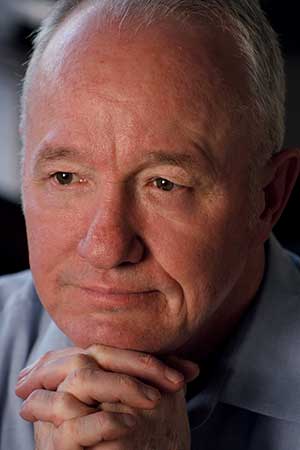Can a young person (or any person) reasonably expect to earn a living today in the way it was possible fifty years ago, twenty years ago or even ten years ago?
Is getting into work as easy as it used to be? 
Are there plenty of entry-level jobs around?
The answer to both these questions is no.
“I can’t get a job without experience, but how do I get the experience to get a job?” is still the complaint of those beginning their working lives.
And it’s not just a young person’s problem.
It certainly hits the young hard. There is 30% youth unemployment in some parts of Australia, and 12.5% nationally.
The jobs just aren’t there for anyone any more in the way they used to be. You try getting a job past the age of 50. It’s not easy. And for many it’s impossible.
Why have we ended up in this mess? The problem is worse than it has ever been and it doesn’t look like it is going to improve any time soon.
One reason for fewer jobs is the impact of the digital revolution on all aspects of our society.
Automation and computerisation has had a bigger impact on jobs and wages than most people expected or hoped. It has not only cut the number of jobs but also wages.
The increased supply of educated office workers has resulted in a sharp decline in wages, relative to production workers. The supply has outpaced demand.
Computerisation increases the demand for educated administration staff, but permits many tasks to be automated. Which means fewer jobs overall.
Computerisation has diminished the value of design skills. Many previously highly skilled creative tasks have been substituted and replaced by preformed templates and affordable, desktop design programs.
Computerisation has diminished the value of video capture and production. A wide range of specialised and highly paid creative tasks have been substituted and replaced by easy to use, and affordable video hardware and software editing tools.
And this has all happened in the last 20 years.
Computerisation has also shaken and disrupted the industries surrounding graphic design, film and video production, like advertising, media and entertainment.
So computerisation and automation doesn’t just replace standardised production skills, it also allows individuals with no or little design or production training to enter a previously high wage environment and change it forever.
Today just about anyone can be a designer, typographer, videographer, editor, producer, director with very little training and experience. And they are.
Even though it can be argued (and it is) that the overall standard of design, or video production quality drops as a result, to most people this is not an issue.
Lower cost and faster turnaround outweighs quality of production.
This has been witnessed in graphic design, brochure production, book production, newspaper production, magazine production, video production and even broadcast quality TV production.
The use of design software tools and affordable hardware (including digital printing) has made these areas accessible to just about anybody, forcing the contraction of the printing, design, news and video production industries and causing a decline in wages.
The same impact of automation on wages and jobs can be seen in market research, legal services, accounting, advertising and administration.
What were once considered to be high value sectors are hollowing out of medium well paid workers and polarising towards a smaller proportion of higher paid (cognitive) and a larger proportion of lower paid (administrational) workers.
The pressure upon workers to be even more agile, flexible and adaptable grows, and the skills required to succeed in this new disruptive environment are multifaceted, including computer skills, traditional writing, reading, comprehension and numeracy skills as well as the unique skills and experience related to a particular industry.
These skills are not learned at school or university but are built upon a common platform of academic skills enhanced and constantly upgraded in other ways – through short courses, MOOCs, on the job training and other means.
Over the last decade, there has been an overall decline in the demand for skill and knowledge workers, even as the supply of workers with higher education has grown.
Many high-skilled workers have moved down the occupational ladder, taking jobs traditionally performed by low skilled workers, pushing low skilled workers even further down the ladder and to some extent out of the workforce altogether.
This is particularly the case with older workers pushed out of the workforce by closures, cuts, contractions, redundancies and job reallocation, who now also have to address and confront ageism as well as try to find work in a new digital environment.
It is also the case with school leavers and the young unemployed (12.5%) who struggle with the two options of finding work (very hard) or reentering education (even harder for some) and now increasingly expensive.
Government support for both options has been slashed and the agencies designated to address the employment issues in a hollowed-out marketplace for both the young and the old are out of ideas.
Computerisation has traditionally been applied to routine tasks that can be accomplished by machines.
But computerisation is now steadily moving into non-routine tasks. Navigating a car through traffic is not a routine task, but it has been achieved by Google and is likely to become a reality in some locations and states soon.
Fast-forward a few years and truck drivers, taxi drivers and delivery drivers will feel the winds of change.
Computerisation is spreading into every non-routine task where data becomes available.
In healthcare, computers can now do diagnostic tasks formally done by medical specialists, more reliably, effectively and efficiently.
In law, the same thing is happening in pre-trial research. In transport, finance and agriculture the same thing is happening. Computers can operate with less bias, consistently and for 24×7.
Estimates by McKinsey Global Institute suggest that algorithms could substitute for 140 million full-time knowledge workers worldwide.
Computers will increasingly challenge human labour in a wide range of cognitive tasks.
So where does that leave us? Where does it leave you, me or our children?
Government doesn’t seem to have joined all the dots on the implications of this new world.
There is no indication in the current budget that any of these issues are addressed. In fact, they seem to be completely ignored.
There will be an increasing divide between those with jobs in innovative, imaginative, design-led, value adding industries and those left behind in some way – either out of work, too young, too old, no skills, can’t speak English, not enough education, too much education, with the wrong skills and wrong certification.
The new “haves” and “have-nots”.
There are no jobs for life, no stable careers, and an ever-decreasing number of niche jobs, government and academic jobs. Even the reliable building and construction trades are not safe from the digital flood.
There is no job security, even fewer opportunities and now a new universal demand for everybody to learn, and keep learning.
Plus an older workforce that can’t afford to retire, and is forced to reinvent itself.
There are not enough jobs to go around. And learning is set to become even more expensive than ever.
Not everyone can work in retail or the health, aged care and community services sectors.
We have to invent new jobs, in value added, productive industries, in agriculture, manufacturing, tourism, cleantech, medtech, greentech, biotech, creative industries, ICT, education and training, design-led professional services, trades and infrastructure.
New jobs will come mainly through startups. And they will need support.
Lose a job and people will face long periods of unemployment and enter a twilight zone with no direction or real options and opportunities. Unless networks are well established this is a period when even professionals can disappear into a cul-de-sac of irrelevance, the wrong history or experience, or too much of it.
Moving from secure employment to occasional projects, or self-employment is a shock and requires a different mindset to cope and flourish.
Higher skilled individuals will enjoy greater flexibility, telework, and work from anywhere.
The lower skilled will compete for fewer positions and opportunities, will become frustrated, dismayed and disaffected, some turning to education and some to crime and disconnection in a variety of ways.
Qualifications will mean less. Ability to deliver will mean more. The problem of evaluation will grow. Deliverables and outcomes will be measured and rewarded not just potential and promises.
Inequality itself is disruptive and unsustainable.
It can’t be managed traditionally in the manner of the 20th century, through propaganda and force in the face of a new connective and collaborative digital revolution in which most people increasingly participate, including the disadvantaged.
Responses to inequality will be both positive and negative.
There will be an increasing movement towards more connection, more collaboration, and more automation for all industries – nowhere to hide.
Job losses and barriers to employment (ageism, no experience, disability etc) will create political pressure to address these problems through skills programs, (but do the traditional agencies know what skills to provide and promote? No).
Where will the vision on training and the training itself come from? Government will have to contribute more to education, skills development and training (not less) as well as PAYG, MOOCs and free skills programs. TAFES and RTOs are already in crisis mode and governments have done little to help.
What are the barriers to success?
The status quo. Ideology. CEOs. Industry associations and chambers of commerce. Unions and councils.
The traditional brokers and enablers are bankrupt of ideas and vision. They are losing memberships and relevance, and are now a roadblock on the highway rather than a gateway.
This has to change.
The emphasis on startups (beginning a business) trialed and promoted in many parts of the United States over the past five years in response to unemployment and job contraction has proven successful.
It frees individuals from the limitations of vision, lack of innovation and agility endemic to large organisations and allows them to take control of their own destinies.
In disruptive times, employers run lean ships, keeping staff levels to a minimum, so startups are an important focus for new job creation. Net job growth comes from startups in the first five years.
Starting a business is really only an option for the educated, courageous, skilled and connected (supported by family, friends and fools). But we have few other options than offering real support.
The digital revolution will continue to impact and change all industries as adoption and familiarity increases. The customer has changed. Customers will collaborate more to influence the outcomes described above.
We need innovation, imagination and experiment in this awkward time.
At a time when these things are seen as risky, it is imperative that we “try” and “see”. Launch and learn.
Only then will we be able to earn and learn.
- John Sheridan, May 2014.
John Sheridan is CEO of Digital Business insights, an organisation based in Brisbane, Australia, which focuses on helping businesses and communities adapt to, and flourish in, the new digital world. He is the author of Connecting the Dots and getting more out of the digital revolution. Digital Business insights has been researching and analysing the digital revolution for more than 12 years and has surveyed more than 50,000 businesses, conducting in-depth case study analysis on more than 350 organisations and digital entrepreneurs.
http://www.db-insights.com/


 How to resolve AdBlock issue?
How to resolve AdBlock issue? 
 CSIRO has released a report warning about what it calls ‘spectrum crunch’ – limits to data flows imposed by limitations in wireless communications.
CSIRO has released a report warning about what it calls ‘spectrum crunch’ – limits to data flows imposed by limitations in wireless communications.